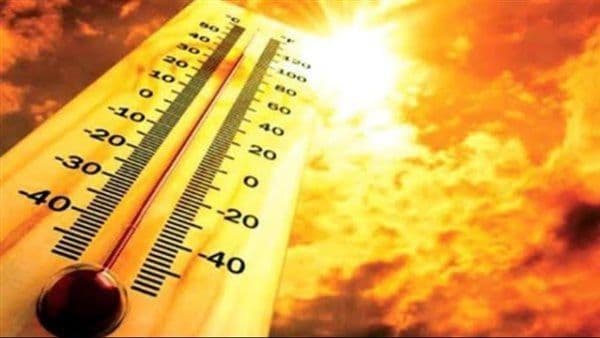The Illusion of Degrees: How Humidity Redefines Our Summer Experience
Unravel the mystery of summer's sweltering days. Discover how humidity silently amplifies heat, making it feel far hotter than the thermometer reads. Learn coping strategies.
Beyond the Thermometer: The Science of Perceived Heat
When summer arrives, our first instinct is often to check the thermometer, believing that a single number will tell us exactly what to expect from the day. Yet, anyone who has experienced a truly sweltering summer knows that the mercury's reading doesn't always align with how we actually feel. This disparity introduces us to the crucial concept of 'perceived temperature,' a far more accurate reflection of human comfort than a simple air temperature measurement. As meteorologists like , Director General of Forecasts and Early Warning at the , have often pointed out, high humidity levels can significantly amplify our sensation of heat, making the air feel anywhere from two to four degrees Celsius hotter than what the thermometer displays in the shade. It's a subtle but profound difference that profoundly impacts our daily lives, transforming a seemingly manageable 37°C day in into something far more oppressive. This 'feels like' temperature isn't just a subjective feeling; it's a measurable phenomenon rooted in how our bodies interact with the environment, particularly when moisture fills the air. Understanding this distinction is the first step in truly preparing for and coping with summer's embrace.

Humidity's Silent Amplification: Why It Feels Hotter Than It Is
So, why does a humid day feel so much more unbearable than a dry one, even if the air temperature is identical? The answer lies in our body's primary cooling mechanism: sweating. When we sweat, the moisture on our skin evaporates, carrying heat away from our bodies and providing a cooling effect. However, the efficiency of this process is heavily dependent on the amount of moisture already present in the air, or what we call humidity. When humidity levels are high, the air is already saturated with water vapor, leaving little room for our sweat to evaporate. It's like trying to dry clothes in a room that's already damp – the process slows down dramatically. This is precisely why, as meteorologists like from the explain, the perceived temperature can surge by several degrees. For instance, in , where humidity can reach a significant 85%, a forecasted air temperature of 36°C can easily feel like a stifling 39°C or even 40°C. In coastal areas, with humidity often exceeding 95%, the air feels heavy and clings to the skin, making any physical exertion feel like a monumental task. This 'silent amplification' of heat by humidity is a critical factor in determining our overall comfort and well-being during the warmer months.
When Realities Clash: Regional Impacts and Notable Examples
The interplay between actual temperature and humidity creates a mosaic of discomfort across different regions, where the 'feels like' reality often clashes with the numerical forecast. Consider the stark differences across a country like on a typical summer day, as detailed by meteorological reports. While inland cities such as (40°C), (41°C), and (42°C) grapple with exceptionally high actual temperatures, the humidity factor in , with its 85% moisture content, pushes its perceived temperature of 39-40°C far beyond its 36°C actual reading, making it feel almost as hot. Meanwhile, coastal cities like (33°C) and (31°C), despite their lower actual temperatures, experience extremely high humidity, sometimes exceeding 95%. This high moisture content makes their slightly cooler air feel surprisingly oppressive, transforming what might otherwise be pleasant coastal breezes into thick, heavy air. The phenomenon of early morning fog, often observed in northern areas, including and parts of , serves as a tangible reminder of the pervasive moisture in the atmosphere, further highlighting how regional climatic nuances dictate our thermal experience far beyond what a simple thermometer can convey.
Navigating the Invisible Heat: Practical Strategies for Comfort
Understanding the science behind perceived temperature and humidity's role is crucial, but what truly matters is how we navigate this invisible, amplified heat in our daily lives. Since our body's natural cooling system is hampered by high humidity, we need to adopt strategies that support it. Staying well-hydrated is paramount; drinking plenty of water, even when not feeling thirsty, helps replenish fluids lost through sweating, which is working overtime to cool us. Opting for light-colored, loose-fitting clothing made from breathable fabrics like cotton can facilitate what little evaporation is possible and allow air to circulate around the body. Planning activities to avoid the peak sun hours, especially midday, as many citizens already intuitively do when heading to work, can significantly reduce exposure to the most intense heat and humidity. Leveraging air conditioning to not only cool the air but also to dehumidify it, or using fans to create a breeze that aids in evaporation, can provide much-needed relief indoors. Ultimately, acknowledging that the 'feels like' temperature is your body's true indicator of stress, rather than just the number on the weather app, empowers us to make smarter choices for comfort and safety during those oppressively humid summer days.
Related Articles

Decoding the Feels-Like Factor: When the Forecast Lies to Your Skin

Decoding the Feels-Like Factor: When the Forecast Lies to Your Skin

The Hidden Heat: Unmasking Egypt's Humid Summer and Adapting to the 'Felt' Reality

The Hidden Heat: Unmasking Egypt's Humid Summer and Adapting to the 'Felt' Reality

The Invisible Inferno: Why Egypt's Heatwave Feels Hotter Than It Looks

The Invisible Inferno: Why Egypt's Heatwave Feels Hotter Than It Looks

From Scorching Peaks to Shifting Skies: Navigating the Dynamics of Extreme Temperatures
